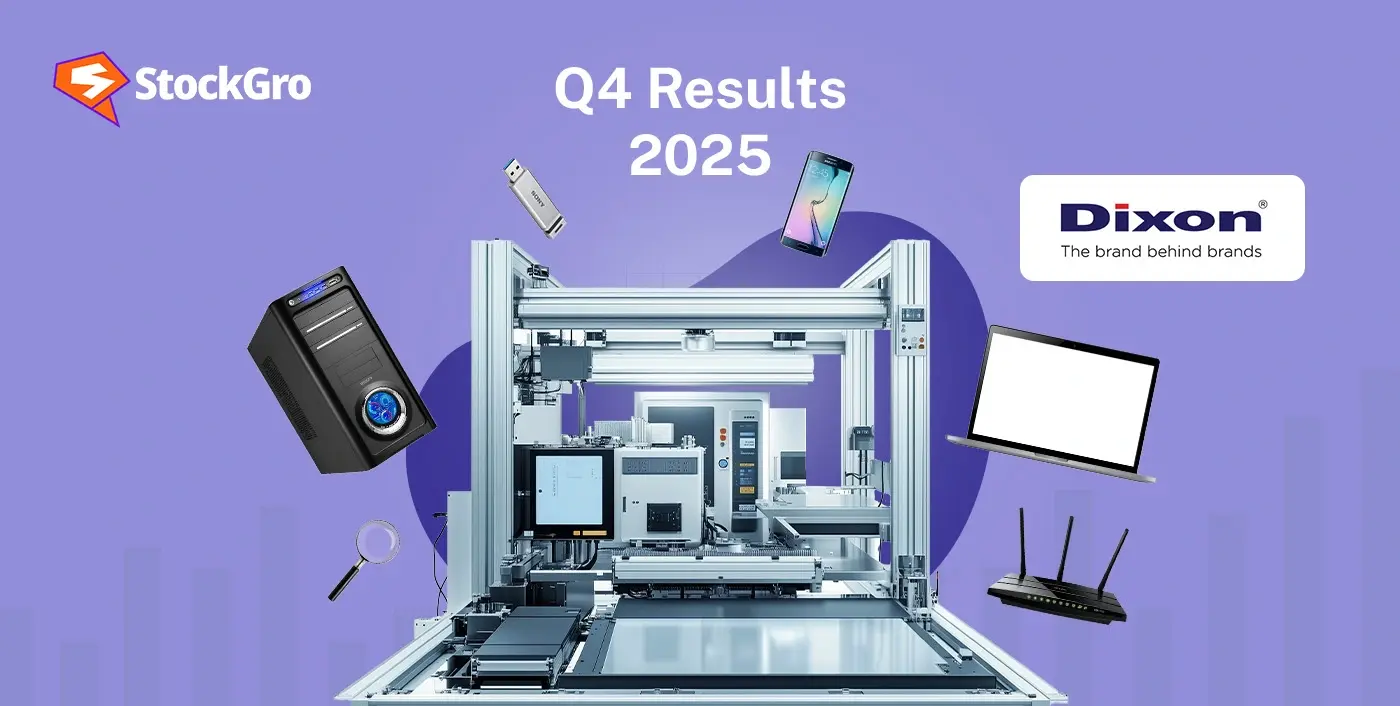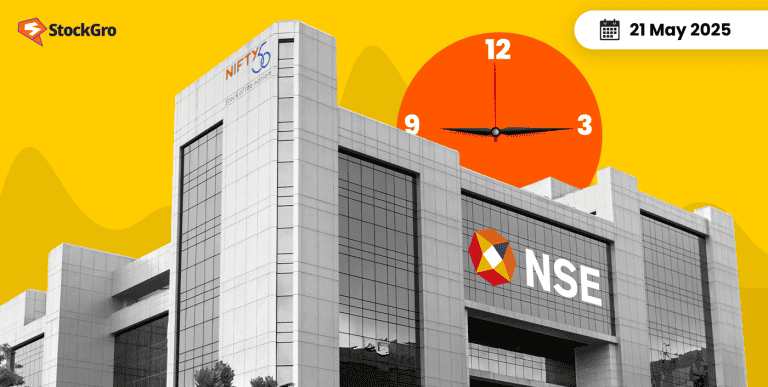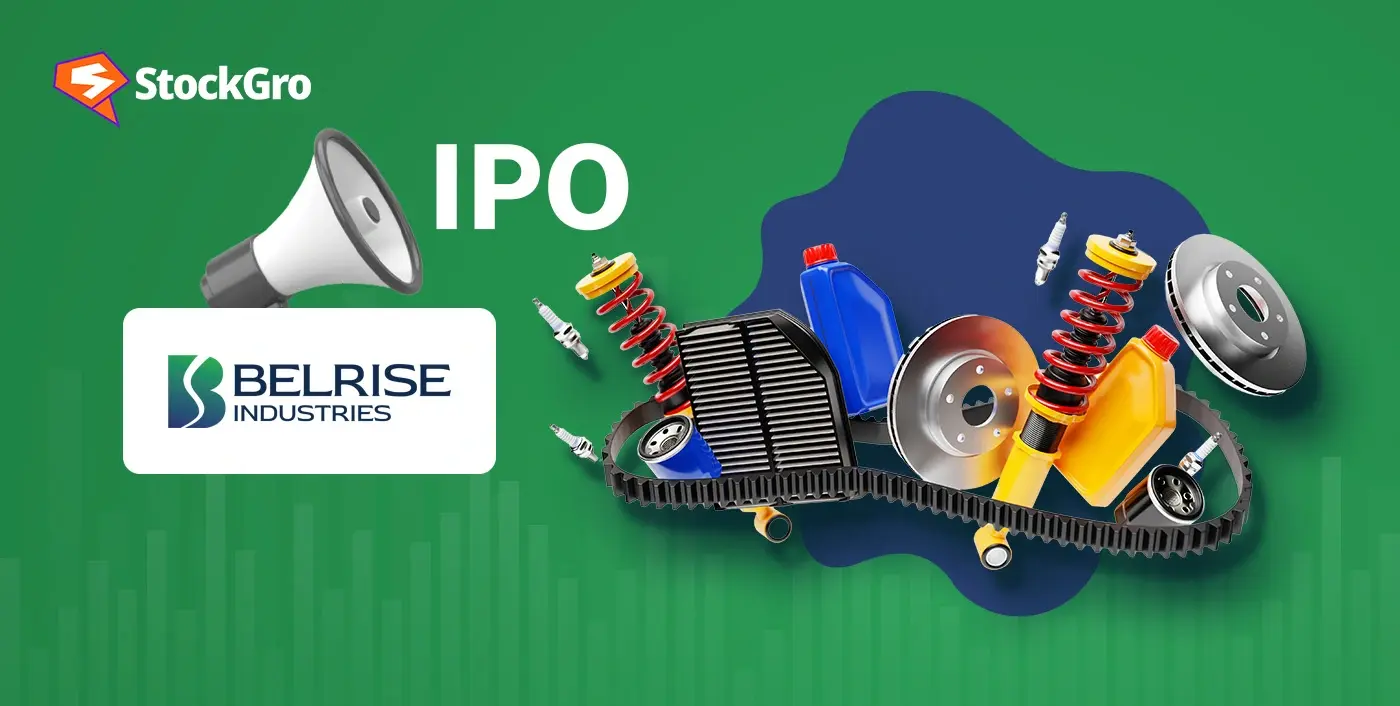
On May 21, Dixon Technologies reported one of its best quarters ever, and still saw its share price sink by 7%. That’s not a typo.
Most investors would expect a rally after such results. But instead of cheers, the market responded with caution. What triggered this disconnect between performance and perception? In this blog, we break down the financials, look at why the Dixon Technologies share price took a hit.
Dixon Technologies Q4 FY25 financial highlights
| Metric | Q4 FY25 | Q4 FY24 | YoY Change |
| Revenue from Operations | ₹10,304 Cr | ₹4,675 Cr | 120% |
| EBITDA | ₹454 Cr | ₹182.5 Cr | 128% |
| EBITDA Margin | 4.30% | 3.90% | 0.4 pp |
| Profit Before Tax (PBT) | ₹576 Cr | ₹130 Cr | 343% |
| Profit After Tax (PAT) | ₹465 Cr | ₹97 Cr | 379% |
Full-year FY25 performance
| Metric | FY25 | FY24 | YoY Change |
| Revenue from Operations | ₹38,880 Cr | ₹17,691 Cr | 120% |
| Profit After Tax (PAT) | ₹1,233 Cr | ₹368 Cr | 229% |
Dixon’s robust performance in FY25 underscores its strong market position and operational efficiency. The significant growth in revenue and profit indicates successful execution of its business strategies and increasing demand for its services.
Also read: Dixon Technologies Stock Report
Why did the Dixon Technologies share price fall?
Even with these strong numbers, the Dixon Technologies share price dropped to an intraday low of ₹15,272, closing ~6% lower on the BSE.
Here are some reasons behind the sell-off:
1. Valuation concerns
Dixon shares had already run up significantly, delivering 85% returns in the last 12 months. After such a strong rally, the stock was priced for perfection. Many analysts flagged lofty valuations, with Dixon trading at 97 times FY26 earnings, well above industry averages.
2. Profit booking
With such a sharp surge in recent months, many short-term investors likely decided to book profits, especially after a big quarter. A classic “buy the rumour, sell the news” scenario.
3. PLI scheme worries
Dixon benefited significantly from the government’s Production Linked Incentive (PLI) scheme, especially for its mobile business. But the scheme is set to end in FY27, and analysts are unsure how Dixon will maintain margins and competitiveness once that support is gone.
4. Delays in new projects
Dixon’s partnerships with Vivo and HKC have faced delays. These were expected to be significant growth drivers. Any delay in production impacts short- to mid-term revenue projections, which naturally makes investors cautious.
You may also like: NLC India surges 9% after 4x Q4 profit
Analyst recommendations
Despite the price dip, most brokerages are still optimistic about Dixon’s long-term prospects, but they’ve revised price targets to reflect current concerns.
Brokerage summary
| Brokerage | Call | Target Price (₹) | Key Takeaways |
| Nomura | Buy | 21,202 down from 22,005 | Strong mobile exports, client base growth |
| Motilal Oswal | Buy | 20,500 | Mobile segment to lead growth, but caution on consumer goods |
| Emkay Global | Buy | 19,800 | Trimmed due to Vivo JV delay and display module setbacks |
| CLSA | Buy | 19,000 + | High conviction on long-term growth and margin stability |
| Nuvama | Hold | 15,470 | Great execution, but valuation too high |
| JM Financial | Hold | 15,650 down from 16,500 | Downgrade due to valuation, PLI expiry, and project delays |
| Yes Securities | Reduce | 15,471 | Cited delays and missed revenue estimates |
Most analysts agree Dixon’s fundamentals are strong, but say current prices already factor in a lot of future growth.
In simpler terms, Dixon is still a solid player, but it may not deliver the same explosive returns from here unless execution and growth continue flawlessly.
Also read: DLF shares rise after strong Q4 FY25
What should retail investors do?
If you already hold Dixon Technologies, this isn’t a panic moment. The business is fundamentally sound and is continuing to expand across segments and geographies. But new investors should understand that valuations are high, and future triggers like exports and new JVs must play out well for the stock to climb meaningfully.
This is a classic case of “great business, but priced ahead of itself.” Many investors confuse a good quarter with a good time to buy, but entry price matters.
Also, the volatility seen in recent months (up 25% in April, down 6% in May) shows how sentiment swings quickly even in strong companies.
You may also read: Delhivery jumps 10% after Q4 results
Final thoughts
The dixon technologies share news may look confusing at first glance: fantastic earnings, but a falling share price. But when you zoom out, it makes sense.
The market doesn’t just reward performance, it prices in expectations, future growth, and risks. And in Dixon’s case, investors are starting to factor in execution risks, end of government incentives, and rich valuations.
The bottom line? If you believe in Dixon’s long-term story (mobile exports, client wins, backward integration), the recent correction might offer a better entry point. But don’t ignore the red flags either.

